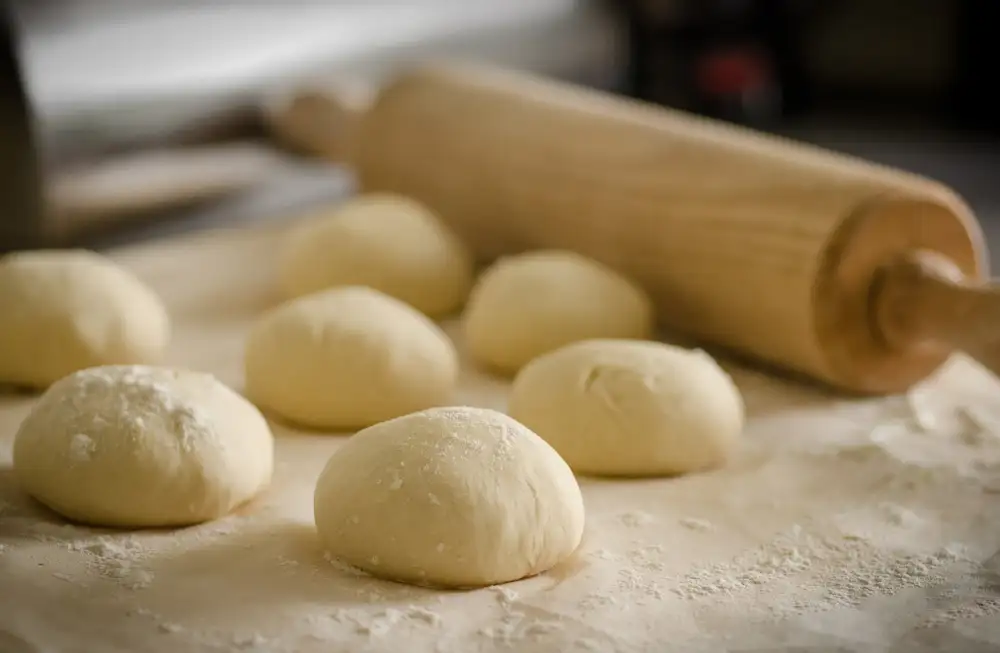Flour Power: Unveiling the Shelf Life of Flour in Your Recipes

Flour is a staple ingredient in many recipes, but its shelf life can vary depending on various factors. Understanding the shelf life of flour is crucial for maintaining the quality and taste of your dishes. The freshness of flour is influenced by factors such as moisture content, storage conditions, and the type of flour being used. By learning more about the shelf life of different types of flour and how to properly store them, you can ensure that your ingredients are always at their best for your culinary creations.
Factors Affecting Flour Freshness
1. Moisture Content: Flour absorbs moisture from the environment, leading to spoilage. High humidity can accelerate this process.
2. Temperature: Heat can cause flour to go rancid quickly. It's best stored in a cool, dry place away from sunlight.
3. Exposure to Air: Oxygen exposure can lead to oxidation of the fats in flour, causing it to become stale.
4. Quality of Packaging: Properly sealed packaging helps protect flour from external factors that can affect its freshness.
5. Storage Conditions: Storing flour in airtight containers or resealable bags can help maintain its freshness for longer periods of time.
Shelf Life of All-Purpose Flour
All-purpose flour, a staple in most kitchens, typically has a shelf life of about 6 to 8 months when stored in a cool, dry place. However, this can vary depending on factors like temperature and humidity levels. It's essential to check the expiration date on the packaging and consider using it within that timeframe for optimal freshness. To extend its shelf life, you can store all-purpose flour in an airtight container in the refrigerator or freezer. Proper storage is key to maintaining its quality and ensuring your recipes turn out as delicious as intended.
Shelf Life of Whole Wheat Flour
Whole wheat flour has a shorter shelf life compared to all-purpose flour due to its higher oil content from the wheat germ. When stored in a cool, dark place in an airtight container, whole wheat flour can last for about 1-3 months at room temperature. To extend its shelf life, consider storing it in the refrigerator or freezer where it can last up to 6 months or even longer. Whole wheat flour should be checked for any signs of rancidity or off odors before use to ensure freshness in your recipes.
Shelf Life of Specialty Flours
Specialty flours, such as almond flour, coconut flour, and chickpea flour, have varying shelf lives due to their unique compositions. Almond flour can last up to 6 months in the pantry and up to a year in the refrigerator or freezer. Coconut flour typically stays fresh for about 18 months when stored properly in a cool, dry place. Chickpea flour has a shelf life of around 6-12 months in an airtight container at room temperature. It's crucial to check the packaging for specific storage instructions to maximize the freshness of specialty flours.
Signs of Spoiled Flour
It's important to be able to recognize when flour has gone bad to prevent any unpleasant surprises in your recipes. Here are some signs that indicate flour may be spoiled:
1. **Unpleasant Odor**: Fresh flour should have a mild, slightly sweet smell. If you detect a rancid or sour odor, it's likely the flour has gone bad.
2. **Discoloration**: Healthy flour is typically white or off-white in color. If you notice any dark spots or discoloration, it could be a sign of spoilage.
3. **Clumping**: Good quality flour should flow freely and feel light and powdery. If the flour appears clumpy or feels moist, it may have absorbed moisture and started to spoil.
4. **Presence of Pests**: Insects like weevils or moths can infest flour, indicating that it's no longer safe for consumption.
If you observe any of these signs, it's best to discard the flour to maintain the integrity and taste of your dishes.
Proper Storage Tips
To maximize the shelf life of your flour, it is crucial to store it properly. Keep your flour in a cool, dry place away from direct sunlight and heat sources. A pantry or cupboard works well, but avoid storing it near appliances that generate heat like ovens or stoves. Additionally, ensure that the flour is sealed tightly in an airtight container to prevent moisture and pests from getting in. For long-term storage, consider placing the container in the refrigerator or freezer to extend its freshness even further. Remember to label the container with the date of purchase to track its age and quality. By following these storage tips, you can maintain the quality of your flour for an extended period.
Extending Flour Shelf Life
To prolong the freshness of your flour, consider storing it in a cool, dry place away from sunlight and heat. Opt for airtight containers or resealable bags to prevent moisture and pests from compromising its quality. Additionally, refrigerating or freezing flour can significantly extend its shelf life. Labeling the storage date on the packaging can help you keep track of its age and ensure you use the oldest flour first. Regularly inspecting your flour for any signs of spoilage and discarding any suspect batches promptly will also help maintain the quality of your ingredients. By following these simple practices, you can maximize the shelf life of your flour and continue creating delightful culinary masterpieces.
In conclusion, understanding the shelf life of flour is essential for maintaining the quality and taste of your recipes. Factors like moisture, temperature, and type of flour play a crucial role in determining freshness. All-purpose flour typically lasts 6-8 months, while whole wheat flour has a shorter shelf life of 4-6 months due to its higher oil content. Specialty flours can vary in shelf life depending on their composition. Signs of spoiled flour include a rancid smell or unusual discoloration. Proper storage in a cool, dry place can help extend the shelf life of all types of flour. Regularly check for signs of spoilage and consider storing flour in airtight containers to maintain its freshness longer.
Published: 06. 03. 2024
Category: Recipes



